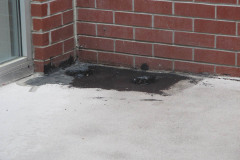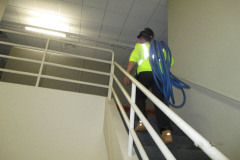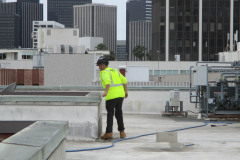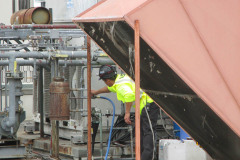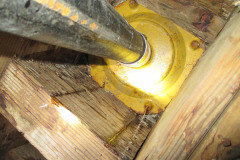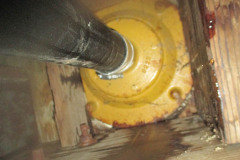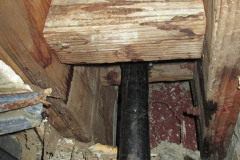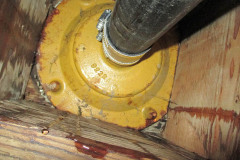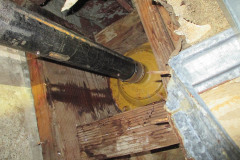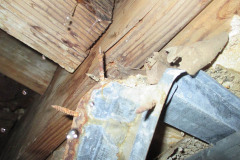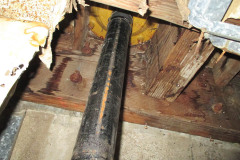Forensic Water Leak Detection in Los Angeles
This is a call which we received from a restoration company. While this project seemed to be somewhat straight forward. As it turned out, we discovered an issue which we weren’t expecting. The general contractor explained to our crew that the new scuppers were installed and flashed appropriately. So we didn’t suspect that to be of issue. The obvious mastic added to the top of the deck was an attempt to fix a leak where the rain was suspected. In some cases, forensic water leak detection is made more difficult when this material exists.
First things first in a forensic evaluation
So, the first step in our forensic water leak detection required us to remove the interior finishes, thereby exposing the underside of the drain. Once removed, and water was applied to the specimen, it was clear. It’s worth noting that the drain was isolated from the deck so only the drain system was tested. Isolation testing is a good idea in forensic testing. The ASTM sets the standards for all of our testing procedure.
Within only a few seconds we were able to observe water existing the scupper flashing. Essentially, this was the flashing to deck connection, viewed from the bottom. In an attempt to confirm that this was in fact the issue and nothing else, next we isolated the drain even further. Once again, the water leaked from the exact location where it was originally found.
Leak detection in Los Angeles are not always this easy
Not all forensic water leak detection projects are this easy, but I suppose it’s all a matter of perspective. What I mean is… the clients who hired us for this work themselves, tested this exact drain multiple times before us. We were only brought in because it was a leak which was otherwise impossible to detect.

